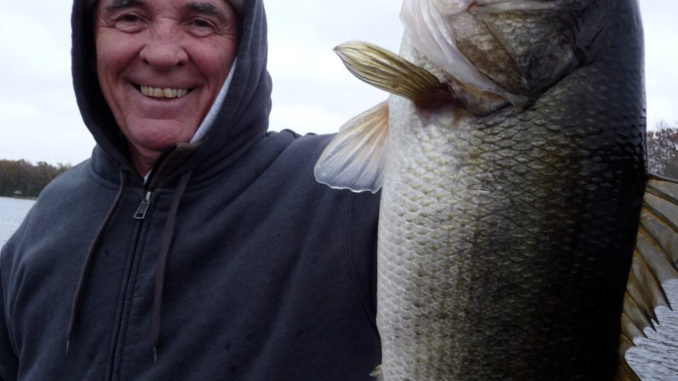
Big, hungry bass moving up are on the menu
March is when most of the big bass are caught in North Carolina. One reason, I think, is because it’s when most people start fishing. For whatever the reason, it doesn’t get much better for bass fishermen in North Carolina. Bass are on the move this month, and you should be, too.
Most of the fish will be prespawn and moving a lot. Points, channel bends, funnel areas — really anything that is a good ambush point with stable water — is good in March. My best advice is to keep moving; only slow down when you hit a school of fish.
When I was growing up in Raleigh, fishing Falls of the Neuse Lake nearly every day, I’d hit fresh schools moving up, and the action was unreal. One time, my dad and I were running down the lake, and I spotted fish busting off of a point. I turned the boat toward those fish so hard that I slung my dad right off the seat. He was mad, but only until we made our first casts. The school was a mixture of largemouths and stripers. We were fishing lipless crankbaits, and it was every cast for 30 minutes until it got dark.
That school was so big, and it stayed there for about a week. It contained mostly 3-pounders, with some nice 6- and 7-pounders mixed in. I have since found this unusual for a school of bass to stay in the same spot for that long in the spring. The are usually on a place for a little while, stopping to feed and then searching for spawning grounds.
On another long-ago trip with my friend Chris Elliott to Lake Mayo for a small tournament, we hit a school of 4-pounders on a point and won the tournament in about 15 minutes. Since that day, I’ve never caught another fish off of that point. They were just moving though that day, and we just hit it right.
That’s why I think you should keep moving in March. I might clean up a spot after catching several on a crankbait with a football jig or Culprit Incredicraw on a hinged football head. Often, you can get an extra fish or two, but don’t spend too long.
Smaller lakes and ponds can be quite different from big lakes. Bass spawn there much earlier, so soft-plastic baits become dominant a lot earlier. While I stay on the move on big lakes with crankbaits and spinnerbaits — only slowing down if a school is contacted — on small lakes, fishing slow often is best.
I’ll often start in a pond with a 3/8-ounce Dave’s Tournament Tackle spinnerbait and burn all the way around it to see where I get a few bites. Sometimes a spinnerbait is the best bait going and you don’t need to slow down, but once they have settled into the spawn, nothing beats plastics. I hit them with a Culprit Incredicraw in dark colors if the water is stained, dingy or muddy and greens if it is clear.





Be the first to comment